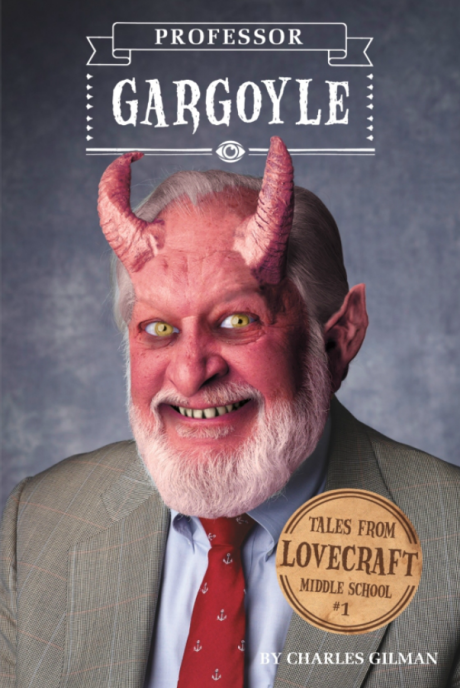5 Reasons Horror in Children’s Literature Is a Good Thing
 I’m a genre fiction book reviewer, so it’s sometimes my job to read really creepy stuff. I’m also the father of two young girls—six and three—both of whom are undeniably fascinated by spooky things. Their new favorite animated television show on Netflix is Ruby Gloom, a decidedly dark series that features characters like Skull Boy, Misery, and Doom Kitty. My oldest has Monster High pajamas (black skulls on pink) and my youngest loves her black skeleton t-shirt (it’s not just for Halloween, she says). And they absolutely love spooky stories, like A Vampire is Coming to Dinner, by Pamela Jane, and Welcome to Monster Town, by Ryan Heshka.
I’m a genre fiction book reviewer, so it’s sometimes my job to read really creepy stuff. I’m also the father of two young girls—six and three—both of whom are undeniably fascinated by spooky things. Their new favorite animated television show on Netflix is Ruby Gloom, a decidedly dark series that features characters like Skull Boy, Misery, and Doom Kitty. My oldest has Monster High pajamas (black skulls on pink) and my youngest loves her black skeleton t-shirt (it’s not just for Halloween, she says). And they absolutely love spooky stories, like A Vampire is Coming to Dinner, by Pamela Jane, and Welcome to Monster Town, by Ryan Heshka.
Some people may disagree with me, but I think exposing your children to horror-nuanced children’s literature at an early age is a positive thing. And here’s why…
1. First and foremost, it gets children interested—exhilarated—about reading. I remember that as a kid, I was fascinated by any book that dealt with monsters or ghosts or anything weird. It was literally thrilling to open up and experience some of these books. There was a sense that I was pushing the boundaries, exploring new territory, doing something that bordered on naughty… it was a little scary and a lot of fun! If your child gravitates towards dark storylines, I’m all for nurturing that love of reading in any way possible.
2. By exploring (albeit superficially) the dark side of humanity and the nature of fear, kids learn more about themselves (their strengths and weaknesses, etc.) and hopefully become more empowered because of it. In Charles Gilman’s excellent Tales from Lovecraft Middle School saga (Professor Gargoyle, The Slither Sisters, and the upcoming Teacher’s Pest), unlikely hero Robert Arthur is an introverted 12-year-old who, through his own ingenuity and a little help from his friends, overcomes all kinds of otherworldly monstrosities.
Heroes come in all shapes and sizes.
3. There are life lessons to be learned. Don’t invite a vampire into your house. Don’t take that shortcut through the cemetery. Staying out late and not telling your parents where you are can be dangerous. Walking into a forested area at night looking for a wayward pet is a bad idea. Don’t take candy from strangers.
Reading horror-infused stories from an early age gave me a healthy dose of paranoia—not a bad thing, if you ask me!
4. These stories create a broader knowledge of literature and its history. When I first read A Vampire is Coming to Dinner to my girls, they asked: “where do vampires come from?” After a much too lengthy explanation, they now know that vampires are fictional creations. They also know all about vampires in literature (Carmila, Dracula, Bunnicula, etc.) and pop culture (Count von Count, Count Chocula).
Just look at Gilman’s Slither Sisters. In it, he introduces kids to H. P. Lovecraft’s Cthulhu, although on a much smaller scale:
“The creature was no bigger than a thumb. Its body had the slimy green scales of a dragon. It had two long flippers for arms but walked on two legs, like a miniature person… The creature had tiny eyes and nostrils, but its mouth was hidden by a dozen mini tentacles that hung from the bottom of its face like party streamers.”
5. Ultimately, reading these kinds of stories is reassuring. The creepy stuff is fiction; it’s in the book and not a part of our everyday lives. Once we have indulged in our dalliance with darkness, we put the book—and the fictional terror—away. After reading about a kid who travels into another shadowy dimension and has to battle his way through all kinds of nasty creepy crawlies in order to get home, having to brush your teeth before bedtime isn’t really that bad, is it?
Do you read scary stories to your kids?